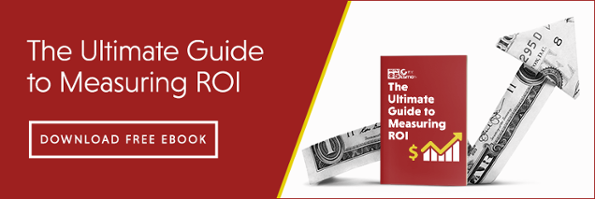
When you define your target audience, you can use your ads to speak directly to customers’ needs, driving more sales for your business. Before you can begin advertising, you need to know your target market. Otherwise, your advertising may not speak to your ideal consumers and may fail to stand apart from competing ads.
You'll gain a clear direction for your ads by advertising to a target market, from the type of creative used in each to the specific platforms worth using. To get you started, here are some tips for finding a target audience.
Gather Data on Your Current Customers
Your current customer database can give you plenty of insight into who you attract and who needs your brand. You can attract prospective customers based on who your existing customers are.
As you look more closely at who is purchasing from your business, you can get clues as to what channels they use, what they're buying, and how much they spend. You can also identify specific problems that they want to solve. You may discover that they prefer certain platforms such as social media or connected TV (CTV) instead of traditional TV. Additionally, you can identify certain behaviors and demographics that help paint a complete picture of your audience.
Conduct Pre-Market Research
 Are you wondering how audiences perceive your brand? If you want to know how people will receive your business, it's necessary to conduct pre-market research. You can do so by finding out who your ideal audience is and asking them specific questions, including what they're looking for from businesses in your industry. You can also build email lists and keep track of social media audiences.
Are you wondering how audiences perceive your brand? If you want to know how people will receive your business, it's necessary to conduct pre-market research. You can do so by finding out who your ideal audience is and asking them specific questions, including what they're looking for from businesses in your industry. You can also build email lists and keep track of social media audiences.
Depending on the data you gather, adjust marketing strategies accordingly. This will help you avoid expensive mistakes by marketing to the wrong audience. Ultimately, you'll be able to significantly reduce risk before launching a campaign with the help of premarket research. On the other hand, if you don't conduct sufficient research, your ads could be too broad and fail to connect. This would lead to wasted ad spend and lower ROI as your campaigns neglect to establish a relationship with consumers.
Understand the Pain Points Your Business Solves
What is your company's "why"? What is the motivator behind your business? What exactly made you enter your industry, and why are you passionate about being in business? These important questions can drive your advertising initiatives. You should also think about the problems your brand and services solve, along with who needs those problems solved. You might find that there are problems that you can address and which competitors aren't discussing. Brands that solve problems and provide solutions get business.
Take the time to understand your audience's problems and how your business solves them, therefore supercharging your marketing. Show people that you empathize with them and know what they're facing, which can attract them to your brand over more detached competitors.
You'll also be able to effectively tell your brand story, which could detail what got you into the business in the first place. In the process, you’ll be able to share your own experience with a particular problem. This problem may have inspired you to go into business and prevent others from experiencing it. If people connect with your brand on a personal level, they'll be much more likely to turn to you to solve their problems.
Create a Buyer Persona
 Based on the information you've gathered about existing and potential customers, you can begin developing a semi-fictional person who represents the ideal customer. This persona will detail everything from the pain points they face to their demographics, occupation, and daily routine.
Based on the information you've gathered about existing and potential customers, you can begin developing a semi-fictional person who represents the ideal customer. This persona will detail everything from the pain points they face to their demographics, occupation, and daily routine.
You can create multiple buyer personas to capture many potential customers in different audience segments. For instance, you might have an audience that consists of busy professionals, while another segment comprises stay-at-home parents, and another persona represents students.
As you develop your campaigns' messaging and branding, the voice and tone of your ads will speak to these buyer personas. Using these personas, you’ll determine which visuals and messaging will resonate with them. As a result, you will successfully design your advertising materials. In the end, buyer personas will help you know and market to the right people.
Effectively Reach Your Audience with the Help of a Media Partner
Want to get the best possible results from your advertising with strategies that truly work? Learning everything you can about your target audience is vital. However, many businesses don't have the time, staff, or resources required to conduct proper pre-market research and implement it in their campaigns.
Thankfully, companies don't have to go it alone when they can turn to media partners. With the help of the right media partner, businesses can get all of the information they need to reach their target audiences. A media partner will look into potential and current customers to gain a deeper understanding of them. They'll help identify specific pain points that you can solve, along with what they want to see from you. You'll then have the chance to develop successful campaigns based on this data, leading to a more extensive customer base and more sales.






